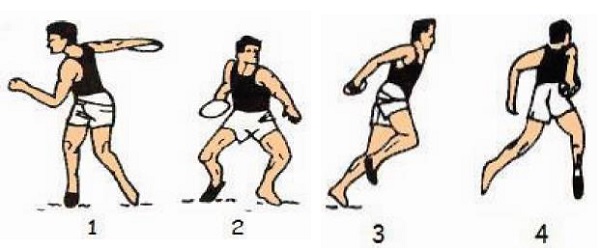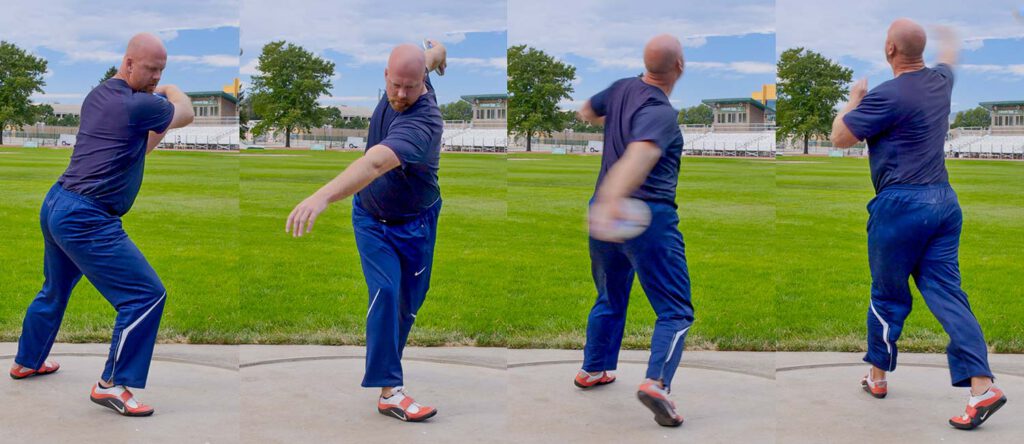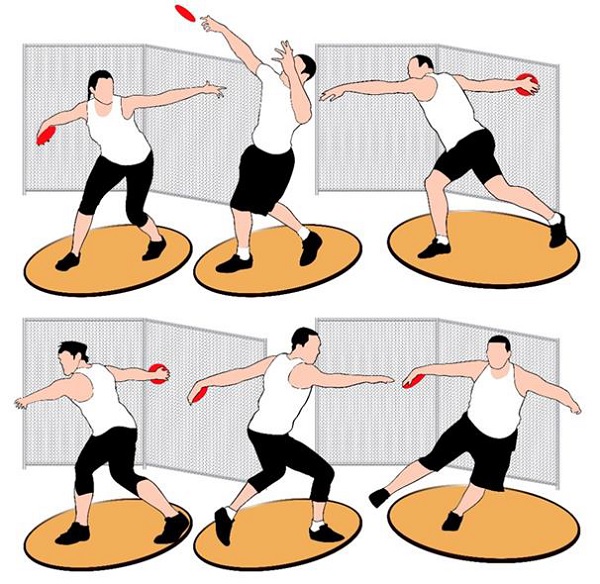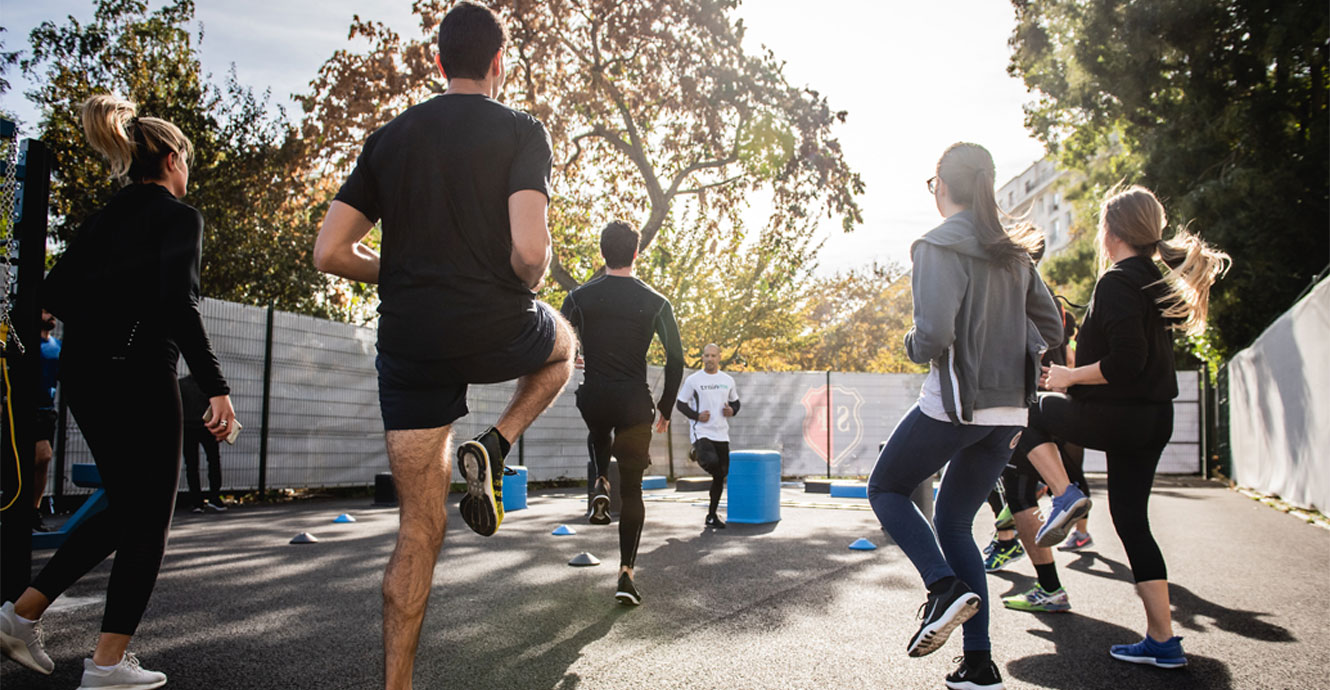The Significance of Warming Up for Discus Throwers
A proper warm-up for discus throwers is a crucial aspect of their training regimen, playing a pivotal role in preventing injuries, enhancing performance, and increasing flexibility. By incorporating a dynamic warm-up routine, discus throwers can prepare their bodies for the specific demands of the sport, ensuring optimal muscle function and joint mobility.

Understanding the Physiology of Discus Throwing
To design an effective warm-up routine for discus throwers, it is essential to understand the biomechanics of discus throwing and the muscles and joints involved in the movement. Discus throwing is a complex, multi-joint movement that requires the engagement of the core, hips, shoulders, and wrists. A proper warm-up routine should focus on these areas to ensure optimal muscle function and joint mobility.
The core, consisting of the abdominal and lower back muscles, plays a critical role in generating power and stability during discus throwing. Engaging the core during the warm-up can help prevent injuries and improve performance. Hip mobility is also crucial for generating power and maintaining balance throughout the throw. By improving hip mobility, discus throwers can increase their range of motion and reduce the risk of injury.
Shoulder mobility and stability are essential for discus throwers, as the shoulders generate a significant amount of power during the throw. Warming up the shoulders can help prevent injuries and improve performance. Finally, wrist mobility is also important for discus throwers, as the wrists play a crucial role in controlling the discus during the throw. By improving wrist mobility, discus throwers can increase their accuracy and control.

Designing a Dynamic Warm-Up Routine
A dynamic warm-up routine is a critical component of a discus thrower’s training regimen. A dynamic warm-up routine involves engaging in movements that increase body temperature, improve mobility, and activate the muscles and joints involved in discus throwing. A proper dynamic warm-up routine can help prevent injuries, improve performance, and increase flexibility.
The components of a dynamic warm-up routine include light jogging, mobility exercises, dynamic stretches, and sport-specific drills. Light jogging is an excellent way to increase body temperature and prepare the body for more intense movements. Mobility exercises, such as leg swings, hip circles, arm swings, and torso twists, can help improve range of motion and reduce the risk of injury. Dynamic stretches, such as lunges with a twist, high knees, butt kicks, and leg kicks, can help improve flexibility and prepare the muscles for more intense movements.
Sport-specific drills, such as the standing power throw, the rotational shot put, and the medicine ball chest pass, can help improve technique and prepare the body for discus throwing. These drills mimic the movements of discus throwing and can help improve power, speed, and accuracy. It is essential to perform these drills safely and effectively to prevent injuries and improve performance.
The benefits of a dynamic warm-up routine are numerous. A proper dynamic warm-up routine can help improve mobility, activate the muscles and joints, and increase body temperature. This can help prevent injuries, improve performance, and increase flexibility. Additionally, a dynamic warm-up routine can help improve technique and prepare the body for more intense movements. By incorporating a dynamic warm-up routine into their training regimen, discus throwers can improve their performance and reduce their risk of injury.

Mobility Exercises for Discus Throwers
Mobility exercises are an essential component of a proper warm-up routine for discus throwers. These exercises help improve range of motion, reduce the risk of injury, and activate the muscles and joints involved in discus throwing. Here are some mobility exercises specifically designed for discus throwers:
Leg Swings
Leg swings are an excellent exercise for improving hip mobility and reducing the risk of injury. To perform leg swings, stand next to a wall or fence for support. Swing one leg forward and backward, keeping the leg straight and the foot flexed. Perform 10-15 repetitions on each leg.
Hip Circles
Hip circles are another great exercise for improving hip mobility. To perform hip circles, stand with your feet shoulder-width apart. Place your hands on your hips and make circular motions with your hips, first in one direction and then the other. Perform 10-15 repetitions in each direction.
Arm Swings
Arm swings are an excellent exercise for improving shoulder mobility and activating the muscles involved in discus throwing. To perform arm swings, stand with your feet shoulder-width apart. Swing your arms forward and backward, keeping them straight. Perform 10-15 repetitions.
Torso Twists
Torso twists are an excellent exercise for improving spinal mobility and activating the core muscles involved in discus throwing. To perform torso twists, stand with your feet shoulder-width apart. Twist your torso from side to side, keeping your hips facing forward. Perform 10-15 repetitions in each direction.
It is essential to perform these mobility exercises correctly to prevent injuries and improve mobility. Here are some tips for performing mobility exercises safely and effectively:
- Warm up before performing mobility exercises to prepare the muscles and joints.
- Perform mobility exercises slowly and with control.
- Focus on maintaining proper form throughout each exercise.
- Stop performing any exercise that causes pain or discomfort.
By incorporating mobility exercises into a dynamic warm-up routine, discus throwers can improve their mobility, activate the muscles and joints involved in discus throwing, and reduce their risk of injury. It is essential to perform these exercises consistently, progressively, and with self-assessment to refine the routine over time.

Dynamic Stretches for Discus Throwers
Dynamic stretches are an essential component of a proper warm-up routine for discus throwers. These stretches involve active movements that increase the range of motion, improve flexibility, and prepare the muscles and joints for the demands of discus throwing. Here are some dynamic stretches that can be incorporated into a warm-up routine:
Lunges with a Twist
Lunges with a twist are an excellent exercise for improving hip mobility and activating the core muscles involved in discus throwing. To perform lunges with a twist, stand with your feet shoulder-width apart. Step forward with one foot and lower your body into a lunge position. Twist your torso towards the front leg and then return to the starting position. Perform 10-15 repetitions on each leg.
High Knees
High knees are an excellent exercise for improving hip flexion and activating the leg muscles involved in discus throwing. To perform high knees, stand with your feet shoulder-width apart. Run in place, lifting your knees as high as possible. Perform 20-30 repetitions.
Butt Kicks
Butt kicks are an excellent exercise for improving hamstring flexibility and activating the leg muscles involved in discus throwing. To perform butt kicks, stand with your feet shoulder-width apart. Run in place, kicking your heels towards your buttocks. Perform 20-30 repetitions.
Leg Kicks
Leg kicks are an excellent exercise for improving hip flexion and activating the leg muscles involved in discus throwing. To perform leg kicks, stand with your feet shoulder-width apart. Lift one leg and kick it forward, keeping the knee straight. Perform 10-15 repetitions on each leg.
Dynamic stretches are different from static stretches, which involve holding a stretch for a prolonged period. Dynamic stretches involve active movements that increase the range of motion and prepare the muscles and joints for the demands of the activity. Research has shown that dynamic stretches are more appropriate for a warm-up than static stretches because they improve performance and reduce the risk of injury.
By incorporating dynamic stretches into a dynamic warm-up routine, discus throwers can improve their flexibility, activate the muscles and joints involved in discus throwing, and reduce their risk of injury. It is essential to perform these stretches consistently, progressively, and with self-assessment to refine the routine over time.

Sport-Specific Drills for Discus Throwers
Sport-specific drills are an essential component of a dynamic warm-up routine for discus throwers. These drills mimic the movements of discus throwing and help to improve technique, power, and speed. Here are some sport-specific drills that can be incorporated into a warm-up routine:
Standing Power Throw
The standing power throw is an excellent exercise for improving power and technique in the discus throw. To perform the standing power throw, stand with your feet shoulder-width apart and hold the discus with both hands. Rotate your hips and transfer your weight onto your back foot. Swing the discus forward and release it at the peak of your throw. Perform 5-10 repetitions.
Rotational Shot Put
The rotational shot put is an excellent exercise for improving rotational power and technique in the discus throw. To perform the rotational shot put, stand with your feet shoulder-width apart and hold the shot put with both hands. Rotate your hips and transfer your weight onto your back foot. Swing the shot put forward and release it at the peak of your throw. Perform 5-10 repetitions.
Medicine Ball Chest Pass
The medicine ball chest pass is an excellent exercise for improving power and technique in the discus throw. To perform the medicine ball chest pass, stand with your feet shoulder-width apart and hold the medicine ball with both hands. Rotate your hips and transfer your weight onto your back foot. Swing the medicine ball forward and release it at the peak of your throw. Perform 5-10 repetitions.
Sport-specific drills are designed to mimic the movements of discus throwing and help to improve technique, power, and speed. By incorporating these drills into a dynamic warm-up routine, discus throwers can improve their performance and reduce their risk of injury. It is essential to perform these drills consistently, progressively, and with self-assessment to refine the routine over time.
By incorporating sport-specific drills into a dynamic warm-up routine, discus throwers can improve their technique, power, and speed. These drills are designed to mimic the movements of discus throwing and help to prepare the muscles and joints for the demands of the activity. It is essential to perform these drills consistently, progressively, and with self-assessment to refine the routine over time.

Cool Down and Recovery Techniques
A proper warm-up for discus throwers is essential for preventing injuries, improving performance, and increasing flexibility. However, cooling down after a warm-up and a training session is equally important. Cooling down helps to reduce muscle soreness, promote recovery, and prepare the body for the next training session. Here are some cool-down and recovery techniques that discus throwers can incorporate into their routine:
Static Stretches
Static stretches are stretches that involve holding a position for a period of time. These stretches are effective in promoting flexibility and reducing muscle soreness. After a training session, discus throwers can perform static stretches for the major muscle groups involved in discus throwing, such as the hips, shoulders, and wrists. Hold each stretch for 20-30 seconds and perform 2-3 repetitions.
Foam Rolling
Foam rolling is a self-myofascial release technique that involves rolling a foam roller over the muscles to release tension and break up knots. Foam rolling can help to reduce muscle soreness, improve flexibility, and promote recovery. After a training session, discus throwers can use a foam roller to target the major muscle groups involved in discus throwing, such as the hips, shoulders, and wrists.
Self-Myofascial Release Techniques
Self-myofascial release techniques involve using tools such as a lacrosse ball or tennis ball to release tension and break up knots in the muscles. These techniques can help to reduce muscle soreness, improve flexibility, and promote recovery. After a training session, discus throwers can use self-myofascial release techniques to target the major muscle groups involved in discus throwing, such as the hips, shoulders, and wrists.
Cooling down after a warm-up and a training session is essential for promoting recovery and reducing muscle soreness. By incorporating static stretches, foam rolling, and self-myofascial release techniques into their routine, discus throwers can promote recovery and prepare their body for the next training session. It is essential to perform these techniques consistently, progressively, and with self-assessment to refine the routine over time.
Creating a personalized warm-up routine is essential for discus throwers to improve their performance and reduce their risk of injury. By incorporating mobility exercises, dynamic stretches, and sport-specific drills into their routine, discus throwers can prepare their muscles and joints for the demands of the activity. It is essential to perform these exercises consistently, progressively, and with self-assessment to refine the routine over time.
Creating a Personalized Warm-Up Routine
A personalized warm-up routine is essential for discus throwers to optimize their performance and reduce their risk of injury. By tailoring the warm-up routine to their individual needs and preferences, discus throwers can ensure that they are adequately preparing their muscles and joints for the demands of the activity. Here are some tips for creating a personalized warm-up routine:
Consider Your Individual Needs
Every discus thrower is unique, and a warm-up routine that works for one person may not work for another. Consider your individual needs and limitations when designing your warm-up routine. For example, if you have a history of shoulder injuries, you may want to focus on mobility exercises and dynamic stretches that target the shoulders. If you have tight hips, you may want to include hip circles and leg swings in your routine.
Incorporate Your Preferences
A warm-up routine should be enjoyable and motivating. Incorporate exercises and drills that you enjoy and that help you get into the right mindset for training. If you prefer dynamic stretches to mobility exercises, focus on dynamic stretches. If you enjoy sport-specific drills, include them in your routine. The key is to create a routine that you look forward to and that helps you prepare for training.
Be Consistent
Consistency is key when it comes to warming up. Perform your warm-up routine before every training session and competition. This will help you establish a habit and ensure that you are always adequately prepared for training and competition.
Progress Over Time
As you become more experienced and your fitness level improves, progress your warm-up routine. Increase the intensity, duration, and complexity of the exercises and drills. This will help you continue to challenge your muscles and joints and prepare them for the demands of the activity.
Self-Assess and Refine
Regularly self-assess your warm-up routine and make adjustments as needed. Reflect on how your body feels during and after training and competition. If you notice areas of tightness or discomfort, adjust your warm-up routine to address those areas. If you feel that certain exercises or drills are no longer challenging, progress them to continue challenging your muscles and joints.
Creating a personalized warm-up routine is essential for discus throwers to optimize their performance and reduce their risk of injury. By considering your individual needs and preferences, being consistent, progressing over time, and self-assessing and refining, you can create a routine that works for you and helps you achieve your goals.
Proper warm-up for discus throwers is essential for preventing injuries, improving performance, and increasing flexibility. By incorporating a dynamic warm-up routine into their training regimen, discus throwers can prepare their muscles and joints for the demands of the activity. A personalized warm-up routine that includes mobility exercises, dynamic stretches, and sport-specific drills can help discus throwers optimize their performance and reduce their risk of injury. Remember to be consistent, progress over time, and self-assess and refine your routine to continue challenging your muscles and joints.


